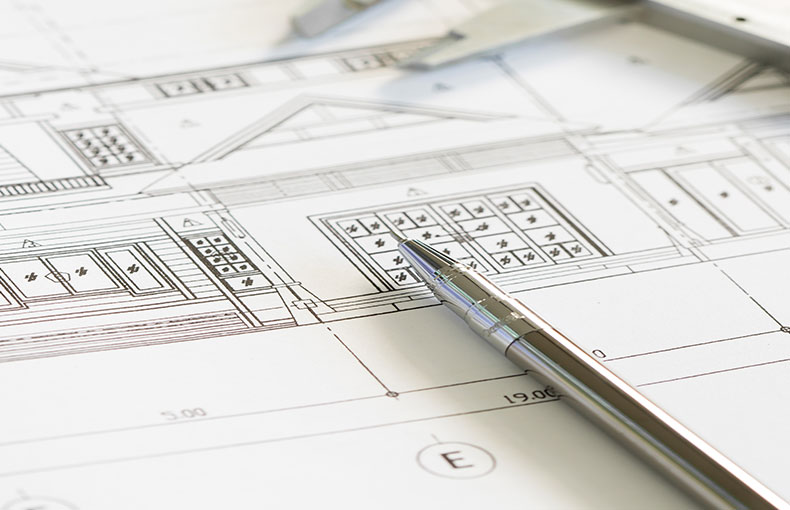What is sustainable construction?
Sustainable construction focuses on minimizing waste, energy use, and material consumption in building and construction processes. It also aims to utilize renewable and recyclable resources to lessen reliance on natural resources.
The objective of sustainable construction is to provide ecologically-friendly and more environmentally conscious buildings, while also avoiding any harmful effects on the environment. This is a strategy that project managers and companies should embrace in order to enhance their reputation and comply with current industry standards.
Why is it necessary to prioritize sustainable construction?
In general, the environment and climate are greatly influenced by human activity. According to the World Health Organization (WHO), as much as 24% of global deaths can be attributed to unhealthy environments, which demonstrates the immense impact that humans have on the environment.
Therefore, it is important to emphasize that each individual has a responsibility in safeguarding the environment to guarantee its long-term use. This responsibility extends to all sectors, including construction, which should actively promote sustainable practices to aid in the preservation of the environment and counteract its decline.
1. Diminishes reliance on natural resources
By prioritizing sustainable practices in the construction industry, it becomes feasible to decrease dependency on fossil fuels, water, and wood. Consequently, this helps diminish carbon emissions and enhances the return on investment (ROI) for contractors.
To illustrate, green buildings incorporate various features such as water harvesting systems, installations of solar or wind power, and water recycling systems that help lessen dependence on traditional resources. Furthermore, these buildings are constructed using recycled materials to guarantee optimal utilization of both energy and materials.
These technologies and systems help decrease the expenses of environmentally-friendly buildings and can lead to substantial reductions in energy usage. In actuality, utilizing sustainable technologies in construction can lead to annual savings of €410 billion on worldwide energy expenses.
2. Sustainable construction aims to reduce the amount of waste generated.
Sustainable construction aims to decrease waste, which is a significant issue in the construction sector due to its high rate of rework at 30%. Additionally, this industry is accountable for more than one-third of the global waste production, posing challenges for recycling efforts and contributing to the accumulation of harmful substances like asbestos.
By implementing alternative approaches to development and construction, such as using renewable resources and recycled materials, the amount of waste generated at construction sites can be significantly minimized. Project managers have the opportunity to repurpose materials like burnt coal, sand, and debris from demolitions, thereby reducing waste and lowering project expenses.
Sustainability promotes the adoption of modern construction methods (MMC) as a means to minimize waste at project locations. One such method is off-site construction, which involves factory assembly and mass production, resulting in efficient management of materials and facilitating optimal recycling.
3. Reduces pollution
The industry contributes to at least 40% of the global carbon dioxide emissions. Many actions within this sector involve the usage of harmful substances and toxic chemicals. If not properly handled, these pollutants may contaminate water sources. Additionally, materials such as diesel, cement, glue, paints, and oil contribute to air pollution.
The act of recycling promotes the reutilization of materials, which in turn prevents the burning of waste items. By doing this, it decreases the quantity of harmful gases that industries release into the atmosphere. Incorporating hybrid technology into the use of site excavators also lessens the reliance on diesel engines.
Other methods that are environmentally friendly and aid in the reduction of pollution include the utilization of 3D printing, the use of Leadership in Energy and Environmental Design (LEED) principles, the incorporation of prefab and modular building techniques, and the exploration of alternative materials for construction.
Sustainability in construction and technological advancements.
Construction companies are increasingly prioritizing sustainability and incorporating technology to revolutionize their operations and optimize procedures. By utilizing technology, it becomes possible to gather information on emissions, material utilization, and various environmental aspects.
To illustrate, telematics has the ability to monitor how much fuel your equipment is using, enabling you to keep track of fuel usage instantly. Additionally, it provides valuable information on aspects such as performance, idle time, and location, ensuring efficient use of the equipment.
Having efficient coordination is also essential in decreasing the amount of wasted materials and constructing streamlined buildings. The LB Coordination tool by LetsBuild is a helpful tool in achieving this. It enables you to minimize mistakes, eliminate repetitive tasks in constructing multiple-story buildings, assess performance, and synchronize project teams.
The software offers support for planning based on location, allowing you to begin your team’s work at any suitable location for smooth transitions between different stages. You have the ability to monitor all aspects while on the move, identifying any deficiencies and optimizing simultaneous tasks to minimize waste and decrease construction time by as much as 20%.
Promote the advancement of eco-friendly practices in construction using lean principles.
The construction industry should adopt sustainable practices to promote the environment and maximize value. Embracing lean construction techniques is one approach to achieve this, as it reduces waste, improves cost control, and enhances safety.
Instead of disposing of construction waste through burning or dumping, the concept of lean construction focuses on finding other practical applications for the materials right at the construction site. This approach not only helps prevent waste but also leads to cost savings. By utilizing technology, you can gain valuable insights into your construction processes and project site, enabling you to effectively minimize the amount of materials used.




